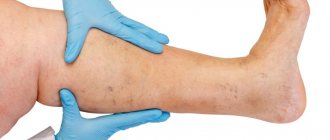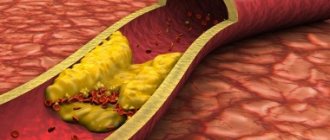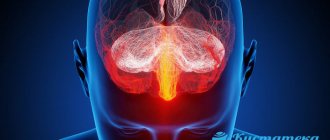What is lymphostasis
Lymphostasis, which in professional language is also called lymphedema, is a disease of the lymphatic system, which affects about 7% of the population.
The main characteristic of the disease is a violation of the outflow of lymph with subsequent retention of stagnant fluid in the tissues. If the disease is not treated, after a few years it will cause elephantiasis, in which the patient becomes disabled and cannot lead a full life.
Even if the pathology is not accompanied by severe swelling, when lymph stagnates, the process of removing waste and toxins slows down, which causes the acidity of the skin to increase. This leads to the fact that the epidermis becomes unprotected, the patient begins to suffer from severe itching and constant infection.
Important! Lymphostasis is a disease that does not go away on its own; you can only get rid of it with the help of professional treatment.
Lymphatic system
The lymphatic system and blood flow are closely related. The lymphatic system also consists of a whole network of capillaries through which lymph “runs.” Initially, lymph is a substance produced by purifying the plasma components of the blood. The lymphatic system is responsible for the following functions:
- movement and distribution of fats throughout the body;
- uniform distribution of liquid;
- cleansing subcutaneous fluids;
- formation of various antibodies;
- production of lymphocytes.
If the lymphatic system is functioning properly, the likelihood of swelling will be minimal. But if the lymphatic lumens are damaged, fluid will begin to linger in the tissue, causing the patient to experience severe swelling.
Lymphostasis of the legs
What is lymphostasis of the lower extremities and how to treat it? This disease is diagnosed only when the lymph flow completely stops, when the lymph stops circulating in the lower extremities and does not drain the connective tissue.
This disorder leads to the formation of chronic edema, which is almost impossible to get rid of. As practice shows, due to anatomical features, lymphostasis is more often diagnosed in the fair sex.
Medical nutrition
Nutrition for lymphostasis plays an important role in the treatment process. A diet for lymphostasis of the lower extremities involves avoiding spicy and fatty foods, as well as minimizing salt intake. The menu should be aimed at ensuring that the patient receives less fluid, fast carbohydrates, fats and salt, as this contributes to the appearance of soft tissue swelling.
When compiling a dietary menu, preference should be given to fresh vegetables and fruits, as well as complex carbohydrates (porridge cooked in water and bread with bran). It is advisable to reduce the amount of sugar and animal fats, as they contribute to the deterioration of lymph flow in the tissues and fluid retention in the body, which is unacceptable in the presence of this disease. At the same time, the amount of proteins should be increased.
Classification
Is it possible to cure lymphostasis of the lower extremities? Experts say that the disease is chronic and it will not be possible to get rid of it completely.
To slow down the progression of the disease, the patient will have to take medications throughout his life and strictly follow medical requirements. The treatment regimen for the disease is selected depending on the form of the disease.
Primary
Primary is a disease whose primary source is congenital anomalies of the lymphatic system. In such a situation, the disease begins to develop slowly immediately after the baby is born or during adolescence.
Secondary
The pathological process is caused by the negative impact of provoking factors. More often it occurs due to prolonged immobility due to illness, injury to vascular connections and various endocrine diseases.
Important! Lymphostasis is classified according to certain characteristics that determine the course of the disease.
This pathological condition is a congenital or acquired pathology, which is characterized by the development of severe swelling of the limb and changes in the skin as a result of damage to the lymphatic vessels. With a long course at the stage of pronounced changes (elephantiasis), the process becomes irreversible and can be accompanied by complications such as disfigurement of the limb due to the proliferation of soft tissues in the form of tubercles, the development of deforming osteoarthritis of the joints, eczema, lymph leakage when the skin is damaged, and many others.
The lymphatic system is represented by vessels and lymph nodes, which are located in all organs and tissues of the body. The lymphatic system performs both immune and metabolic functions - it transports various biologically active substances and molecules, immune cells, and metabolic products. Lymph flows away from organs and tissues under slight pressure, under the influence of oncotic and hydrostatic pressure. Stagnation of lymph leads to the fact that the surrounding tissues and vessels are saturated with excess fluid and metabolic products, which leads to hyalinosis and fibrosis of soft tissues. Blood circulation is secondarily disrupted and pronounced trophic disorders and increasing swelling of the limb develop. Depending on the cause of the development of lymphostasis, primary and secondary forms of lymphedema are distinguished. In the first case, the condition is congenital in nature (idiopathic lymphedema) and is caused by disturbances in the development of the lymphatic system: blindly ending vascular formations, underdevelopment or absence of lymphatic vessels, fibrosis of the lymph nodes. The causes of secondary lymphostasis can be such conditions as: tumor or traumatic damage to the lymphatic vessels, relapses of erysipelas, sedentary lifestyle, chronic venous insufficiency, disturbances at the microcirculation level in other somatic diseases.
The clinical picture of lymphostasis of the lower extremities depends on the stage of the pathological process. The initial (or 0 - 1a) stage is characterized by the presence of hidden disorders of lymph transport without clinically significant edema. Subtle swelling may occur after severe exercise or drinking large amounts of liquid. At stage 1 (or spontaneous reversible edema), noticeable swelling of the lower limb occasionally appears, which disappears in the morning or after rest. The swelling is usually of a doughy consistency; after pressing it, a trace remains; no trophic changes in the skin are noted. At the stage of spontaneous irreversible edema with lymphostasis (stage 2) - after the formation of edema, it does not disappear, the skin over it becomes tense, thickens, and subjective sensations appear in the form of unexpressed pain. When you press on the swelling, there is no trace left; the swelling has a dense consistency. At stage 3, elephantiasis itself is formed with cystic fibrous proliferation of soft tissues and the irreversibility of the condition. At this stage, the development of various complications is possible - damage to the skin, osteoarticular system, infectious complications.
The diagnosis and treatment of lymphostasis is carried out by a phlebologist; according to indications, consultation with a lymphologist or vascular surgeon is necessary.
To make a diagnosis, it is necessary to identify characteristic complaints, find out the duration of the disease, possible causes of the disease, conduct an examination and palpate various parts to identify characteristic signs. Additional examination methods include ultrasound duplex angioscanning and, if possible, MR lymphography or CT angiography.
Differential diagnosis is carried out with chronic venous insufficiency, lesions of the cardiovascular, urinary and osteoarticular systems.
The goal of the treatment is to reduce or stop the progression of edema and trophic disorders. Conservative therapy includes compliance with the prescribed physical activity regimen, diet, and decongestant therapy. The latter includes manual lymphatic drainage and pneumomassage, which are carried out in courses of 20 days, compression therapy using low-stretch materials, as well as a set of exercises. Antibacterial therapy after preliminary culture and sensitivity determination is indicated for the addition of trophic ulcers. All patients must be under medical supervision and undergo periodic medical examinations, which include ultrasound duplex angioscanning. It is also recommended to carry out preventive measures that will allow maintaining the achieved level of compensation - normalize weight, avoid increased insolation, invasive interventions on the affected limb, perform prescribed exercises, use compression garments, and care for the skin of the limb.
Causes of lymphostasis
Treatment of lymphostasis of the lower extremities, photos of which are presented below, is selected not only depending on the form of the pathology, but also taking into account what exactly triggered the onset of the disease.
If primary lymphostasis occurs only due to congenital pathologies of the lymphatic system, then the secondary form of the disease can develop under the influence of such factors:
- the appearance of tumors of a malignant and benign nature;
- heart diseases;
- inflammatory dermatological process;
- constriction of blood vessels;
- renal failure;
- chest surgery;
- lack of protein;
- prolonged dehydration;
- removal of nodal connections of the lymphatic system.
Causes
Regardless of the location, lymphostasis is characterized by the presence of swelling (widespread or limited) of soft tissues caused by the accumulation of lymph. Considering the significant (up to two liters per day) volume of lymphatic fluid production, one can understand the scale of the disaster experienced by the body affected by the disease.
This pathological process occurs due to a violation of the integrity of large and small lymphatic vessels. Considering the etiology of the development of the disease, lymphostasis is usually divided into primary and secondary.
Lymphostasis is a polyetiological disease, since its development in the lower and upper extremities can be caused by many pathogenic factors, for example:
- Varicose veins of the abdominal cavity and veins of the lower extremities . Due to chronic venous insufficiency, the vessels of the lymphatic bed dilate compensatoryly, as a result of which their tone decreases and valvular insufficiency of the walls develops.
- Congenital anomalies of lymphatic vessels (aplasia, hypoplasia and hyperplasia) of vessels , inevitably ending in the development of primary lymphostasis.
- Burn or injury leading to damage to the vascular walls of one or more lymphatic vessels.
- Systematic compression of the lymphatic vessel by surrounding inflamed or tumor tissues.
- Surgical interventions (for breast cancer and tumors of the chest cavity), ending with the removal of lymph nodes.
- Penetration of roundworms into the lymphatic vessels - filaria, provoking the development of filarial lymphostasis. In this case, the cause of disruption of the free flow of lymph is the accumulation of helminths, narrowing the lumen of the vessel they occupy.
- Erysipelas of the upper and lower extremities.
- Chronic renal failure can give rise to the development of lymphedema of the scrotum and lower extremities.
- Presence of obesity.
- Congenital disease of the veins of the lower extremities , called Klippel-Trenaunay-Weber syndrome.
Symptoms
Signs of pathology depend on the stage of the disease. As symptoms increase, the disease will progress to the next stage until it reaches its peak.
Main features:
- constant weakness in the legs and increased fatigue;
- swelling;
- frequent attacks of headache;
- weight gain;
- discomfort and pain in the joints;
- white coating on the tongue;
- deterioration of attentiveness.
If drug treatment is not started in a timely manner, the patient will develop persistent swelling accompanied by painful sensations. Soon the contours of the limb will begin to change, and tissue deformation will become more pronounced.
Stages of the disease
According to the ICD (international classification of diseases), the following stages of the disease are distinguished:
- Stage I. Swelling is mild and often appears only in the morning. A few hours after waking up, the tissue swelling goes away on its own. Swelling can also occur after physical activity. Phlebologists assure that at this stage, changes in the connective tissue will be weakly expressed, if suitable drugs are used to treat lymphostasis of the lower extremities, the development of pathology will be able to be slowed down;
- Stage II. At this stage, swelling becomes permanent, and an increase in the amount of connective tissue is observed. Externally, the epidermis on the legs seems stretched; when palpated, the patient feels sharp pain. If the doctor presses his finger on the skin during the examination, the pressure mark will not go away for more than 20 minutes. Also at this stage, many patients suffer from periodic seizures;
- Stage III. The disease becomes chronic. Cystic components are formed in the modified structural tissue. The affected limb completely changes its appearance, its contours and proportions are disrupted. Due to the loss of skin immunity, inflammation and ulcers often occur.
Important! If complications occur at the third stage, the likelihood of death increases.
Signs of the disease
The first manifestation of the disease is swelling, which is most noticeable in the afternoon. After an overnight rest, when the legs were motionless, swelling was not noticeable.
All of these initial conditions are treatable, so you shouldn’t turn a blind eye to them. The main key to treatment is timely assistance from a specialist.
Factors provoking edema in initial lymphostasis of the lower extremities are:
- active physical activity;
- long walks;
- prolonged sitting in one place, limited mobility of the legs.
The second most severe form of manifestation of the disease is diagnosed when the following phenomena occur:
- connective tissue cells grow, which leads to tissue compaction in the swollen area;
- as a result, the skin is tense;
- swelling does not stop even after rest, in the morning;
- in places where swelling is most evident, periodic pain occurs;
- Fatigue quickly appears in the legs when moving, and cramps often occur.
Diagnostics
Radioisotope lymphography
Which doctor treats lymphostasis of the lower extremities? The first thing the patient needs to do is see a phlebologist or lymphologist; vascular surgeons also treat this pathology.
In order for a doctor to understand how to cure lymphostasis of the lower extremities and how to slow down the progression of the disease, the patient will have to undergo multiple instrumental examinations and tests. Diagnostics includes the following stages:
- Lymphography (X-ray using a contrast agent).
- Lymphoscintigraphy. Refers to methods of radioisotope diagnostics.
- Ultrasound examination of the pelvic organs, heart muscle and kidneys.
- Duplex scanning of capillaries.
- Blood analysis.
It is necessary to assess the overall clinical picture and determine whether the patient has any third-party chronic diseases.
Treatment
How to cure this disease? The main goal of any therapy is to regulate lymph flow in the affected limb. To achieve a positive effect, therapy must be comprehensive.
Find out what is more effective for varicose veins: Detralex, Venarus or Phlebodia?
And here is information on how to relieve leg fatigue with varicose veins with ointment.
Follow the link to the article “How to properly bandage your legs with an elastic bandage for varicose veins: step-by-step instructions”
Changing your diet
Treatment of secondary lymphostasis of the lower extremities begins with a change in diet. The patient needs to completely stop consuming salt and fatty foods, as they promote fluid retention and increase thirst.
The patient needs to drink about 1.5 liters per day. liquids, coffee and tea must be replaced with berry fruit drinks without sugar. The most important criterion is also the refusal of sweets and starchy foods. The basis of the diet should now be vegetables, fruits, and water-based cereals.
Drug therapy
Reviews about the conservative treatment of lymphostasis of the lower extremities are also positive. But you need to understand that you will have to take prescribed medications for the rest of your life. Most often, patients are prescribed drugs from the following pharmaceutical categories:
- phlebotonics;
- painkillers in the form of tablets and solutions for internal administration;
- anti-inflammatory drugs;
- diuretics.
Compression products
Many phlebologists advise patients to wear compression hosiery, which will evenly distribute pressure on the affected area.
It is recommended to select medical stockings together with your doctor, who will tell you how to put them on correctly and how often to wear them.
Traditional methods of treatment
Regardless of the causes of the disease, treatment can be carried out not only with the help of modern medicines, but also with traditional methods.
Drinking birch sap and tincture of plantain leaves helps relieve the condition. The patient can also take a tincture of garlic and honey.
Among non-traditional methods, treatment of lymphostasis of the lower extremities using Dr. Kapustin’s method is especially popular.
The essence of the method is the injection of biomaterial from fresh eggs mixed with saline solution. It is worth noting that currently most doctors do not approve of this method.
Treatment with folk remedies at home
Lymphostasis is a disease characterized by long-term treatment, therefore, in addition to drug therapy, traditional medicine gives good results. Natural raw materials are rich in healing properties that help eliminate the cause of the disease without causing harm to the body and have a beneficial effect on the vascular wall.
- Dandelion root – the product enhances lymphatic drainage and tones the vascular wall. Use an infusion of dandelion leaves, taking 0.5 cups on an empty stomach three times a day. To prepare the infusion you will need 2 tbsp. spoons of dry dandelion leaves, they need to be filled with 0.5 liters in the evening. boiled water. Drink the finished infusion throughout the next day, and prepare a fresh portion in the evening. You can also use dandelion roots, but they should be boiled in a water bath for 5-8 minutes. in the same volume of water. Drink a glass of the prepared decoction in the morning before meals.
- Compresses help a lot . For example, baked onions mixed with pharmaceutical tar. The onion is baked, ground until smooth and 2-3 spoons of tar are added. The finished mixture is laid out on a clean canvas cloth. The tissue is evenly distributed over the area of local swelling, fixed with a bandage and left until the morning.
- Apple cider vinegar in a volume of 10 ml should be mixed with a glass of water and one teaspoon of honey. Use the mixture in the morning 10 minutes before. before breakfast.
- Natural herbs that have a diuretic effect have a therapeutic effect, helping to quickly eliminate swelling of the legs. Mix a collection of nettle leaves, birch buds and rose hips in equal parts and simmer in a water bath for 10-15 minutes. After filtering the infusion, drink half a glass three times a day 30 minutes before meals.
- a decoction of chamomile with a string is ideal . Mix the herbs and boil for 10 minutes. over low heat, then take baths overnight for 20 minutes.
- Decoctions of medicinal herbs can be used in the form of night applications. For herbs, take St. John's wort, plantain, and yarrow. Add 25 ml of medical alcohol, an aspirin tablet and an ampiox tablet to the prepared solution. I soak gauze with the composition and apply it to the affected area of skin, put a cloth soaked in a strong salt solution on top and securely fix it with a bandage, leaving it overnight.
- Traditional medicine has not avoided the active use of leeches . For mild swelling, you can use 2-3 leeches per session. In more advanced cases, the number of leeches can be increased to 7-8 pieces. During the week you can do two treatment courses. Hirudin, contained in leeches, not only thins the blood perfectly, but also strengthens the vascular wall, reducing the effusion of fluid into the tissue and, as a result, significantly reduces swelling of the legs.











